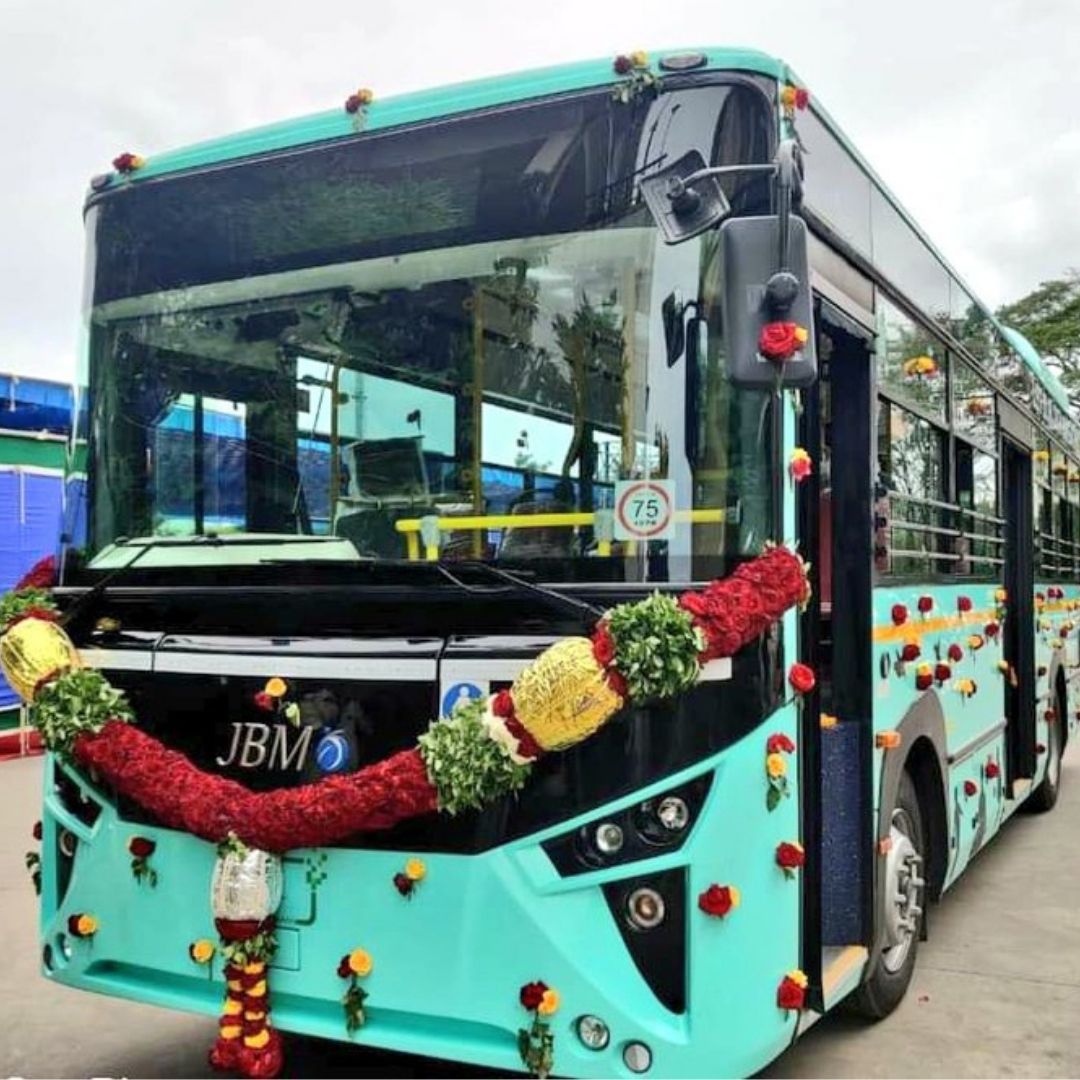
Image Credits: Twitter/Darshan
Green Rides: Bengaluru Gets Its First Electric Bus, Will Offer Metro Feeder Service
Writer: Neelima Mishra
Guru Govind Singh Indraprashtha University in New Delhi is where Neelima Mishra is doing her master's degree. She graduated from Delhi University with a bachelor's degree in journalism (hons.). She is pursuing a corporate communication specialisation at IP University.
India, 1 Oct 2021 6:21 AM GMT
Editor : Palak Agrawal |
Palak a journalism graduate believes in simplifying the complicated and writing about the extraordinary lives of ordinary people. She calls herself a " hodophile" or in layman words- a person who loves to travel.
Creatives : Palak Agrawal
Palak a journalism graduate believes in simplifying the complicated and writing about the extraordinary lives of ordinary people. She calls herself a " hodophile" or in layman words- a person who loves to travel.
Feeder bus services are designed to act as connecting links —to pick up passengers in a certain locality and to ferry them to the Namma Metro stations where they can make an onward journey.
Bengaluru's first electric bus was unveiled by Transport Minister B Sriramulu on Thursday, September 30. It will run as a feeder service at Namma Metro stations and eliminate last-mile connectivity problems faced by Metro passengers.
Feeder services are designed to act as connecting links —to pick up passengers in a certain locality and to ferry them to the Namma Metro stations where they can make an onward journey.
The first of 90 electric buses was introduced at the Kengeri depot and as many as 300 additional buses would be procured in the coming days. The buses have been built by Uttar Pradesh's JBM Auto Limited and handed over to the Bangalore Metropolitan Transport Corporation (BMTC).
E-buses will operate from the BMTC's Yeshwantpur and KR Puram facilities in addition to Kengeri. Each e-bus will be able to ferry 33 passengers. Commercial operation of these buses would begin on Kannada Rajyotsava, according to BMTC authorities, as reported by The Indian Express.
The BMTC, in collaboration with Smart City Bengaluru and the National Thermal Power Corporation Ltd, is launching the buses. According to officials, the automotive company would dispatch 90 mini-electric buses as part of the project, which will cost ₹130 crore. There is a tremendous underlying opportunity for effective delivery of road transport service in India.
As per reports, the BMTC will install charging points for the buses at the depots and provide the infrastructure needed to run the e-buses at the three depots.
Electric buses (e-buses) will pave the way for a more efficient mass public transportation system in the future. Apart from being cleaner and greener, the major advantage of an e-bus is its extremely low operational and maintenance (O&M) expenditure per unit km. The Total Cost of Ownership (TCO) of e-buses is 10-20 per cent lesser than that of diesel buses.
In September 2017, the first commercial e-bus operations began in India in Himachal Pradesh. Since then, the e-bus market has evolved substantially. By March 2020, about 1,031 e-buses were sold across different states and transport undertakings.
 All section
All section













